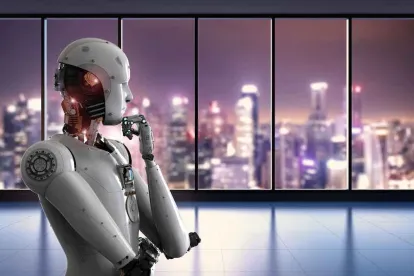As a tool for humans, cars replaced walking. For decades, automobiles were playthings for the rich. Yet these vehicles have been a cornerstone of our economy and culture since at least the Great Depression. Introduction of Ford’s Model T as a car for the working people is usually cited as the inflection point between these two eras.
As a tool for humans, computers replaced specific types of thinking. Computers were long limited to the military and heavy industry. Apple, IBM, Microsoft and others opened an era where every company operated on computing power and a huge percentage of homes owned these tools.
These two ubiquitous tools for human efficiency, and dozens of others, changed elite technologies to a common household instruments. Whether through evolution or revolution, our popular tech needs to demonstrate not only obvious utility to regular people – students of the digital age call them killer apps – but also the effectiveness to work reliably, the efficiency to achieve goals quickly, and the price point to be available for purchase by the vast middle of the market.
Cars and computers needed to become reliable, efficient, and moderately priced before they were desirable to small businesses and middle-class households. Will robots reach this inflection point soon?
Robots are tools that primarily replace hands and arms. Now, robots are tools for heavy industry and toys for the rich. Single-task robots have begun to invade consumer consciousness in the form of Roombas and automowers. Will robots always serve as uni-taskers in our houses and businesses, or will more general purpose machines be operating our homes in the future?
Let’s first define what I mean by robot. For the purposes of this column, a robot is a machine that operates in the physical world – so, although your Amazon Echo or Google Home can manage a dozen functions around your house relatively independently, I am not counting them as robots because they function entirely digitally with no mechanical reach into their environment. But a robot needs to have some autonomous functional capacity to manage and complete physical tasks. It must be able to react to stimuli in its physical environment, so an impressive old machine like a player piano would not count. The Roomba is a good example because, operating on pre-set parameters, the machine vacuums your floors and reacts to obstacles like furniture and pets.
SoftBank introduced the Pepper humanoid robot for multi-functional applications through expensive subscription agreements in 2014. Last year SoftBank stopped Pepper production after disappointing sales and customer returns. Expectations are high for a robot shaped like a human, and disappointments in performance can ruin the experience.
Robots don’t seem ready for prime time just yet. In 2015 the Henn na robot hotel opened with 243 robots. It has now laid off half of them, “because they created work rather than reduce it” claimed the Wall Street Journal. Some of the hotel’s robots frustrated guests because they did not perform with the efficiency of Alexa or Siri, failing comparisons with the technology users already knew. The Journal story reported that the velociraptor robots at the check-in desk could not make passport copies, and “The two robot luggage carriers are out of use because they can reach only about two dozen of the more than 100 rooms in the hotel. They can travel only on flat surfaces and could malfunction if they get wet going outside to annex buildings.”
However, some of the lifting robots in the hotel have been successful, and other hotels have single robots in use for basic functions. The restaurant industry has used automation for years to standardize repetitive tasks. Domino’s is advertising tests of driverless vehicles for pizza delivery. At Spyce restaurant chain in Boston, a group of former MIT classmates developed and operate a fully robotic kitchen. With labor costs eating 24 to 40 percent of restaurant revenue, hospitality bots are a natural progression for food chains to limit human employees to the roles demanding customer interaction and judgment.
Relying on effective robots can have its downside too. Because of their novelty and complexity, producers of successful niche robots may sell their machines for years without any serious competition, allowing them to take advantage of a de facto monopoly position. The first-mover advantage is even greater in fields like health care that require government review and approval of any machines used for treatment. A group of hospitals are suing Intuitive Surgical company to break its monopoly related to million-dollar surgical robots. The majority of Intuitive Surgical’s revenue comes not from initial sales of its robots, but from the service, maintenance and accessory contracts the company forces its customers to sign. Hospitals want to break the company’s hold on secondary market items and services.
Household robotics is on the rise as sensors become cheaper and a second-generation builds on previous successes. Roombas have been sold for 20 years. Home management robots combining mobility, location sensors and task-specific mechanics are hot in today’s market, whether the task be vacuuming carpets, mopping tiles, or cutting grass. And these bots can be set to initiate their own work patterns and operate at off-hours. Grillbot scrubs your outdoor cooking vessels. Automated self-cleaning litter boxes keep you house and kitty clean, provide relevant biomeasurements, and reduce the least appealing task of cat ownership.
Household robotics is on the rise as sensors become cheaper and a second-generation builds on previous successes.
At the higher end, LG Styler, a clothes management system quick-dries sweaters without shrinkage, steams hanging clothing and allows “pants crease care” to press that sharp crease on any fabric. The Foldimate folds clothes neatly when the items are fed into its port. Many other home robots are in development, but no one knows what will truly be useful and catch the public’s imagination.
Robots performing other household tasks involving carrying, holding, moving, or cleaning objects would need an arm, which could be dangerous to nearby humans and expensive/difficult to manage. They would also need to learn the layout of the house and sense their location. Starting with gripping softly enough to avoid breaking glass and opening different types of doors, the complexity of jobs required of a general-purpose robot will be prohibitively expensive for many years without significant technological breakthroughs.
Yet technology is advancing steadily. We know that a machine’s ability to understand and react to human speech has improved in the past decade, and strategies for accomplishing physical tasks are developing too. Researchers from Facebook and academia just announced a Rapid Motor Adaptation software that may assist production of general purpose robots to operate at peak performance with less expensive hardware. Google published a framework for robots to move in unexpected environments. These advances may bring down costs and increase flexibility in advanced robots.
It may be years or decades before general-function robots reach the inflection point between expensive curiosity and invaluable appliance. In the mean time we will continue to benefit from single-function robotic tools to improve our lives.




 />i
/>i

